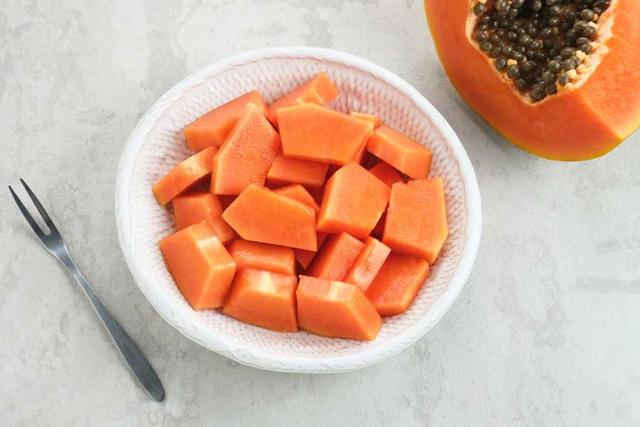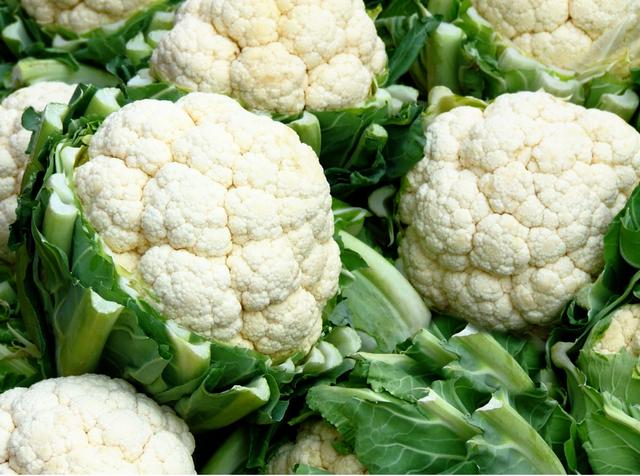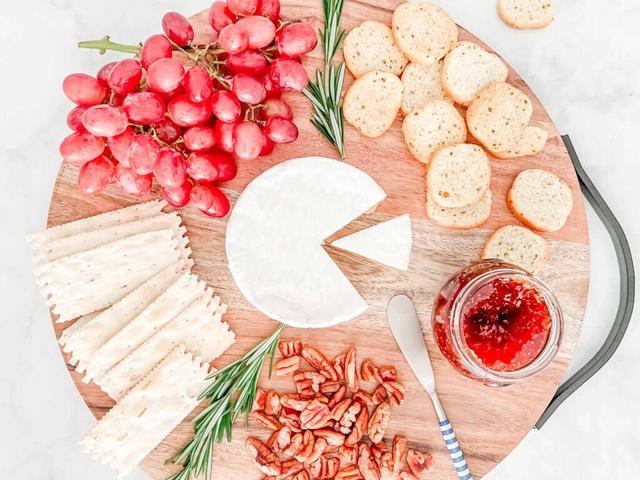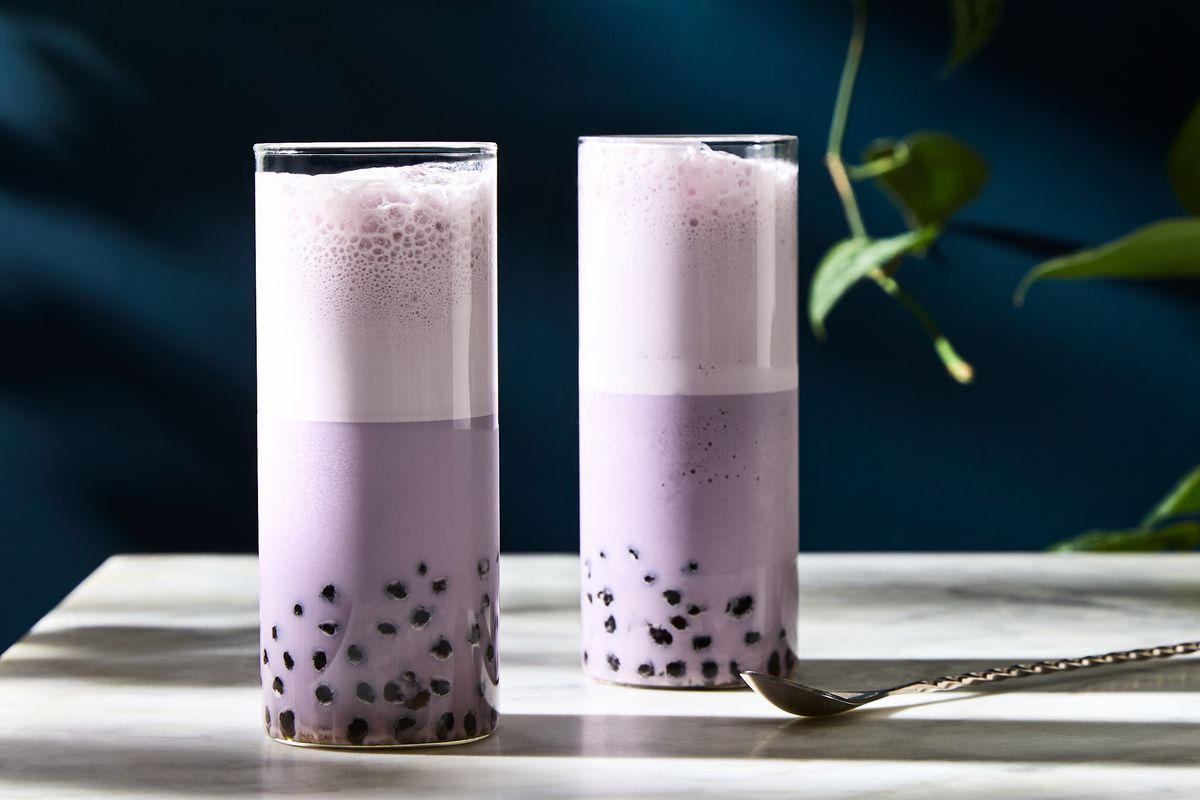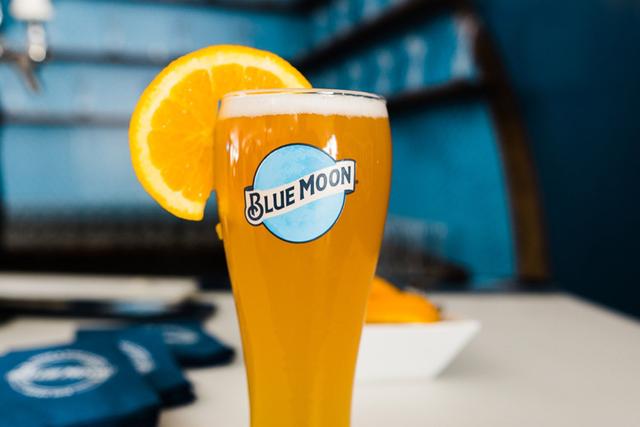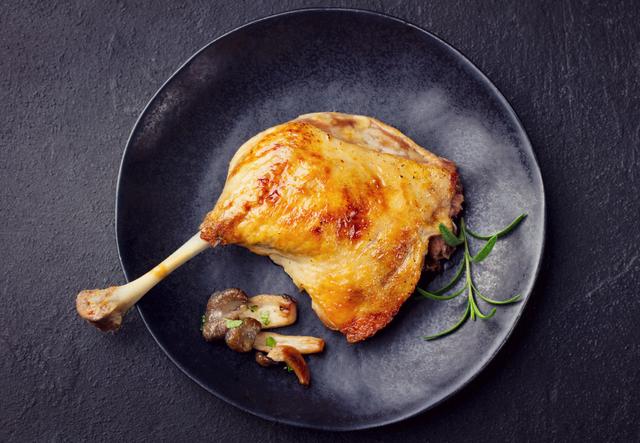
Curious about the taste of duck? Discover the delectable flavors of this versatile poultry. Dive into our exploration of what duck tastes like, from its succulent meat to its distinct, savory notes. Uncover how this culinary gem can elevate your dining experience and tantalize your taste buds.
1. Exploring the Unique Flavor Profile of Duck Meat
Duck meat stands out from other poultry, such as chicken or turkey, due to its distinct and robust flavor. Unlike the mild and neutral taste of chicken and turkey, duck offers a depth of flavor that leans towards being intense and rich. The meat is succulent and full-bodied in taste, with a savory flavor that combines sweetness with a slight gamey undertone.
One factor that contributes to the unique taste of duck meat is its higher fat content. The natural fat of the duck breast melts and infuses into the meat when cooked, resulting in a smooth and buttery texture. This higher fat content also gives the meat a richer flavor compared to leaner chicken.
The diet of a duck also plays a role in influencing the flavor of its meat. Farm-raised ducks that are fed a diet of corn and soybeans tend to have a milder, less gamey flavor. On the other hand, wild ducks that eat a variety of foods such as aquatic plants, seeds, insects, and small fish develop a more flavorful and gamey taste in their meat.
The cooking method chosen for preparing duck can further enhance its taste profile. Roasting is one popular method that allows the fat to render out and baste the meat, resulting in juicy and flavorful duck with crisp golden skin. Braising is another technique where the duck takes on more of the flavors from the braising liquid, making it less gamey in taste. Pan-searing is best suited for duck breasts and can be complemented with sauces or glazes after cooking.
In conclusion, exploring the unique flavor profile of duck meat reveals its distinct characteristics compared to other poultry. With its richness, complexity, succulence, and tenderness, duck offers an unparalleled culinary experience. Understanding factors such as different breeds, diets, and cooking methods can help achieve desired flavors when preparing duck dishes.
2. The Distinctive Taste of Duck: A Culinary Delight

Duck meat is renowned for its distinct and robust flavor that sets it apart from other poultry options such as chicken or turkey. This unique taste can be attributed to the higher fat content found in duck, which adds richness and complexity to its flavor profile. Unlike chicken and turkey, which are mild and neutral in taste, duck offers a depth of flavor that leans towards being intense and rich. Its savory taste combines sweetness with a slight gamey undertone, providing a truly unique culinary experience.
One of the factors that contribute to the distinctive taste of duck is its natural fat content. The fat present in the duck breast melts and infuses into the meat when cooked, resulting in a succulent and full-bodied flavor. This higher fat content also gives the meat a smooth and buttery texture that is unlike the leaner chicken.
In addition to its rich flavor, duck meat has a tender and moist texture that offers a substantial and satisfying chew. The skin of the duck crisps up during cooking, providing a delightful contrast to the tender meat beneath. This combination of textures enhances the overall eating experience.
The taste of duck can also be influenced by various factors such as different duck breeds and their varying amounts of fat. Breeds like white Pekin, mallard, Muscovy, and moulard have different fat contents, which will ultimately affect the taste and texture of the meat. Understanding these differences can help you choose the appropriate breed for achieving your desired flavor in your duck dishes.
Furthermore, the diet of a duck plays a significant role in determining its flavor profile. Farm-raised ducks fed on a diet primarily consisting of corn and soybeans tend to have a milder and less gamey flavor compared to wild ducks that consume a variety of foods including aquatic plants, seeds, insects, and small fish. The diverse diet of wild ducks leads to a more flavorful and gamey taste in their meat.
Lastly, the cooking method employed also influences the taste of duck. Roasting is a popular method that allows the fat to render out and baste the meat, resulting in juicy and flavorful meat with a crisp, golden skin. This cooking technique accentuates the natural flavors of the duck. On the other hand, braising duck tends to produce meat that is less gamey and takes on more of the flavor from the braising liquid. Pan-searing is best suited for duck breasts and works well when paired with sauces or glazes after cooking.
In conclusion, the distinctive taste of duck makes it a culinary delight for those seeking a rich and complex flavor experience. Its higher fat content, unique breed variations, diverse diet, and cooking methods all contribute to its distinct flavor profile. Whether roasted, braised, or pan-seared, duck offers a savory taste that combines sweetness with a slight gamey undertone while providing a tender and moist texture.
3. Unveiling the Rich and Robust Flavor of Duck Meat
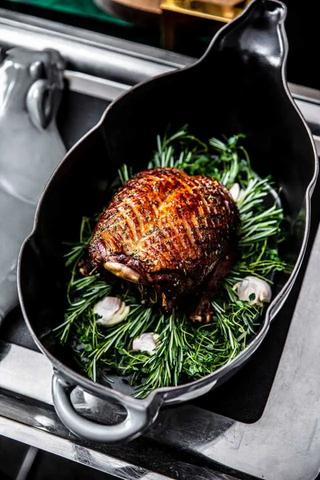
Duck meat is known for its distinct, robust flavor that sets it apart from other poultry options like chicken or turkey. This unique taste can be attributed to the higher fat content found in duck meat. Unlike chicken and turkey, which are mild and neutral in flavor, duck offers a depth of taste that leans towards being intense and rich. The meat is succulent and full-bodied, providing a satisfying chew.
One key factor that contributes to the flavor of duck meat is its natural fat content. The fat in the duck breast melts and infuses into the meat when cooked, resulting in a smooth and buttery texture. This higher fat content also gives the meat a richer flavor compared to leaner poultry options like chicken.
In addition to its higher fat content, duck meat also possesses a slight gamey undertone that adds complexity to its savory taste. While chicken and turkey have a more straightforward flavor profile, duck combines sweetness with this subtle earthiness. This makes it an excellent choice for pairing with fruit-based sauces or robust spices.
The taste of duck can vary depending on different factors such as breed and diet. Different breeds of ducks, such as white Pekin, mallard, Muscovy, and moulard, have varying amounts of fat which can influence the taste and texture of the meat. Choosing the appropriate breed can help achieve the desired flavor in your duck dishes.
Furthermore, the diet of a duck plays a significant role in determining its flavor. Farm-raised ducks fed on corn and soybeans tend to have a milder and less gamey flavor compared to wild ducks that consume a variety of foods such as aquatic plants, seeds, insects, and small fish. The varied diet of wild ducks leads to a more flavorful and gamey taste in their meat.
Lastly, the cooking method used for preparing duck can also affect its taste. Roasting, for example, allows the fat to render out and baste the meat, resulting in a juicy and flavorful interior with a crisp, golden skin. This method enhances the natural flavors of the duck. On the other hand, braising tends to reduce the gamey taste and imparts more of the flavor from the braising liquid. Pan-searing is best suited for duck breasts and works well with adding sauces or glazes after cooking.
In conclusion, duck meat offers a distinct and robust flavor that sets it apart from other poultry options. Its higher fat content, combined with a slight gamey undertone, provides a depth of taste that is intense and rich. The cooking method used as well as factors such as breed and diet can further influence the flavor profile of duck meat. Whether roasted, braised, or pan-seared, duck meat delivers a tender and moist texture that is sure to satisfy any culinary enthusiast’s palate.
4. Duck vs Chicken: Understanding the Difference in Taste
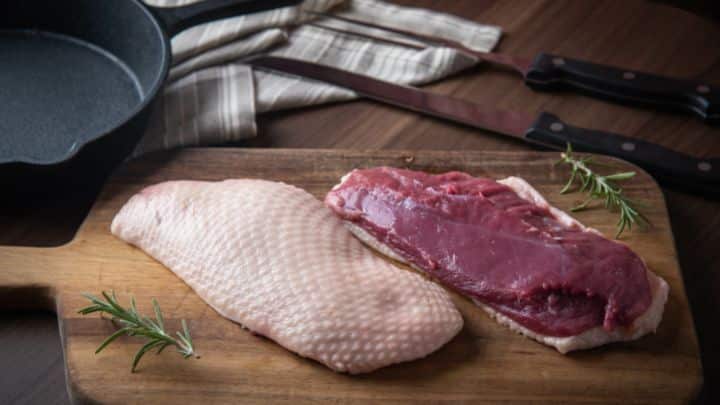
When it comes to comparing the taste of duck and chicken, there are several key differences to consider. One of the main factors that sets duck apart from chicken is its higher fat content. This added fat gives duck meat a richer flavor and a smoother texture compared to the leaner chicken.
Duck meat has a distinct, robust flavor that is unlike any other poultry. While chicken and turkey have mild and neutral tastes, duck offers a depth of flavor that leans towards being intense and rich. The meat is succulent and full-bodied in taste, providing a substantial and satisfying chew.
In terms of texture, duck meat is tender and moist. The natural fat in the duck breast melts and infuses into the meat when cooked, resulting in a buttery texture. Additionally, the skin of the duck crisps up during cooking, providing a contrast to the tender meat beneath.
The taste of duck can also be influenced by various factors such as breed and diet. Different breeds of ducks, such as white Pekin, mallard, Muscovy, and moulard, have varying amounts of fat which will influence the flavor and texture of the meat. Choosing the appropriate breed can help achieve your desired flavor profile.
Furthermore, the diet of a duck plays a role in its taste. Farm-raised ducks that are fed a diet of corn and soybeans tend to have a milder, less gamey flavor. On the other hand, wild ducks with their varied diet consisting of aquatic plants, seeds, insects, and small fish have more flavorful and gamey-tasting meat.
Lastly, cooking methods also affect the taste of duck. Roasting allows for the rendering out of fat which bastes the meat resulting in juicy and flavorful flesh with crispy skin. Braising tends to reduce gaminess while imparting flavors from the braising liquid. Pan-searing is best suited for duck breasts and can be complemented with sauces or glazes after cooking.
In conclusion, the taste of duck stands out from other poultry due to its distinct flavor profile, higher fat content, and unique cooking methods. Its rich and complex taste, combined with a tender and moist texture, make it a popular choice for those seeking a more flavorful dining experience.
5. Unlocking the Secrets of Duck’s Savory and Gamey Undertones
Duck meat is known for its distinct and robust flavor, which sets it apart from other poultry options like chicken or turkey. One of the reasons for this unique taste is the higher fat content found in duck. The bird’s fat contributes to a rich and complex flavor that cannot be replicated by leaner meats.
When it comes to taste, duck offers a depth of flavor that leans towards being intense and rich. It has a savory taste that combines sweetness with a slight gamey undertone. Unlike chicken and turkey, which are mild and neutral in flavor, duck meat stands out with its full-bodied and succulent taste.
The natural fat present in duck breast further enhances its flavor profile. During cooking, the fat melts and infuses into the meat, resulting in a smooth and buttery texture. This higher fat content also gives duck meat a richer flavor compared to leaner poultry options like chicken.
Another factor that affects the taste of duck is its diet. Farm-raised ducks fed on a diet of corn and soybeans tend to have a milder flavor with less gamey undertones. On the other hand, wild ducks that consume a variety of foods such as aquatic plants, seeds, insects, and small fish develop a more flavorful and gamey taste in their meat.
Choosing the right breed of duck can also influence the taste and texture of the meat. Different breeds like white Pekin, mallard, Muscovy, and moulard have varying amounts of fat content, which directly impacts their flavor profiles.
The cooking method employed plays an essential role in bringing out the best flavors in duck meat. Roasting is an excellent technique as it allows the fat to render out while basting the meat. This results in juicy and flavorful meat inside with a crisp golden skin on top.
Braising is another cooking method that can be used with duck. It tends to reduce the gamey flavor and allows the meat to take on the flavors of the braising liquid, resulting in a milder taste.
For duck breasts, pan-searing is a popular choice. This method works well with adding sauces or glazes after cooking, allowing for further customization of flavors.
In conclusion, unlocking the secrets of duck’s savory and gamey undertones involves understanding factors such as fat content, diet, breed selection, and cooking methods. By considering these aspects, one can achieve the desired flavor profile when preparing delicious duck dishes.
6. From Succulent to Intense: Discovering the Flavors of Duck Meat
Duck meat is known for its distinct and robust flavor that sets it apart from other poultry options like chicken or turkey. The rich and complex taste of duck can be attributed to its higher fat content, which adds depth and intensity to its flavor profile. Unlike the mild and neutral taste of chicken and turkey, duck offers a savory experience that combines sweetness with a slight gamey undertone. Its succulent and full-bodied texture further enhances the overall eating experience.
One of the defining characteristics of duck meat is its tender and moist texture. The natural fat present in the duck breast melts during cooking, infusing into the meat and resulting in a smooth and buttery texture. Additionally, the crispy skin provides a delightful contrast to the tender meat beneath. This combination of textures adds to the overall enjoyment of consuming duck.
The taste of duck can also be influenced by various factors such as breed and diet. Different breeds of ducks, including white Pekin, mallard, Muscovy, and moulard, have varying amounts of fat, which directly impacts the taste and texture of the meat they produce. Understanding these differences can help in selecting the appropriate breed to achieve desired flavors in your duck dishes.
Furthermore, a duck’s diet plays a significant role in determining the flavor of its meat. Farm-raised ducks that are fed corn and soybeans tend to have a milder taste with less gaminess compared to wild ducks that feed on aquatic plants, seeds, insects, and small fish. The varied diet of wild ducks contributes to a more flavorful and gamey taste in their meat.
The cooking method chosen also affects the taste of duck. Roasting is an excellent way to accentuate the natural flavors of duck as it allows the fat to render out while basting the meat. This results in juicy and flavorful meat with a crisp, golden skin. On the other hand, braising duck tends to reduce the gamey taste and allows the meat to absorb more of the flavors from the braising liquid. Pan-searing is best suited for duck breasts and provides an opportunity to add sauces or glazes after cooking.
In conclusion, duck meat offers a unique and delicious flavor experience that stands out from other poultry options. Its rich and complex taste, combined with a tender and moist texture, makes it a popular choice for many culinary enthusiasts. Understanding factors such as breed, diet, and cooking methods can further enhance the flavors of duck meat in various dishes.
7. The Butteriness and Smooth Texture of Duck: A Taste Unlike Any Other Poultry
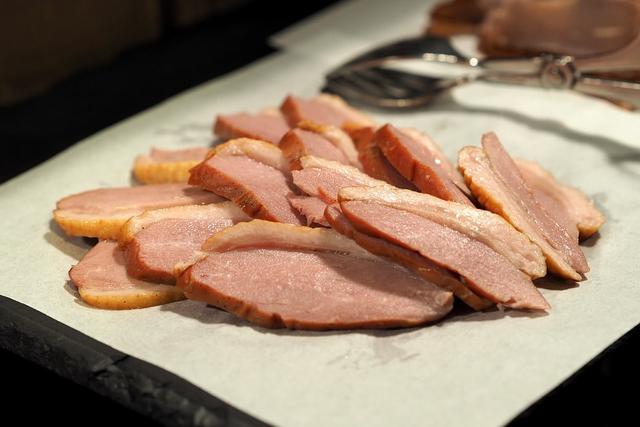
Duck meat is known for its distinct buttery texture that sets it apart from other types of poultry. The higher fat content in duck, especially in the breast, gives the meat a smooth and almost velvety mouthfeel. As the duck cooks, the natural fat melts and infuses into the meat, creating a rich and succulent texture that is truly indulgent.
The skin of the duck also plays a role in its unique texture. When cooked properly, the skin crisps up to provide a delightful contrast to the tender meat beneath. This combination of tender meat and crispy skin adds another layer of enjoyment to every bite.
The Influence of Duck Breeds on Texture
Different breeds of ducks have varying amounts of fat, which can impact the texture of their meat. For example, Muscovy ducks are known for having leaner meat compared to other breeds like moulard or Pekin ducks. The difference in fat content contributes to variations in texture, with leaner ducks offering a firmer bite while fattier ducks provide a more melt-in-your-mouth experience.
Cooking Methods and Texture
The cooking method you choose can also affect the texture of your duck. Roasting is one popular method that allows the fat to render out and baste the meat as it cooks. This results in juicy and flavorful duck with a crisp, golden skin. The slow cooking process accentuates the natural flavors and enhances the tenderness of the meat.
Braising is another technique that can alter the texture of duck. When braised, duck tends to become less gamey and takes on more flavors from the braising liquid. This method can result in tender and moist meat that is perfect for dishes like confit or stews.
If you prefer a quick cooking method, pan-searing is ideal for duck breasts. This method allows you to achieve a crispy skin and a tender interior. It also works well with adding sauces or glazes after cooking, further enhancing the overall texture and taste of the dish.
In conclusion, the butteriness and smooth texture of duck meat make it truly unique among other types of poultry. The higher fat content, combined with the cooking methods used, creates a succulent and indulgent experience that is unmatched by chicken or turkey. Whether roasted, braised, or pan-seared, duck offers a texture that is sure to please any food lover.
8. Factors Influencing the Taste of Duck: Breeds, Diet, and Cooking Methods
Different Duck Breeds
The taste and texture of duck meat can vary depending on the breed of duck. Popular duck breeds used for culinary purposes include white Pekin, mallard, Muscovy, and moulard. Each breed has a different amount of fat, which greatly influences the flavor and texture of the meat. For example, Muscovy ducks tend to have leaner meat with a milder taste compared to moulard ducks that have a higher fat content resulting in a richer flavor.
Diet
The diet of a duck also plays a significant role in determining the flavor of its meat. Farm-raised ducks are typically fed a diet consisting mainly of corn and soybeans. This controlled diet results in meat with a milder and less gamey flavor. On the other hand, wild ducks have a varied diet that includes aquatic plants, seeds, insects, and small fish. The diverse range of foods they consume contributes to a more flavorful and gamey taste in their meat.
Cooking Methods
The cooking method chosen for preparing duck can greatly impact its taste. Roasting is a popular method that allows the fat to render out while basting the meat, resulting in juicy and flavorful meat with a crisp golden skin. This cooking technique enhances the natural flavors of the duck.
Braising is another method commonly used for cooking duck. It involves slow-cooking the meat in liquid such as broth or wine. Braised duck tends to be less gamey and takes on more of the flavors from the braising liquid.
Pan-searing is best suited for cooking duck breasts. This method involves quickly searing the breast on high heat to achieve crispy skin while keeping the meat tender and moist inside. It also allows for the addition of sauces or glazes after cooking, further enhancing the flavor.
In conclusion, the taste of duck can be influenced by various factors such as the breed of duck, its diet, and the cooking method used. Understanding these factors can help you choose the right breed and cooking technique to achieve your desired flavor when preparing duck dishes.
9. Roasted, Braised, or Pan-Seared: How Cooking Techniques Impact the Taste of Duck
When it comes to cooking duck, the method you choose can greatly impact the taste and texture of the meat. Each cooking technique brings out different flavors and characteristics in the duck.
Roasting:
Roasting is a popular method for cooking duck as it allows the fat to render out and baste the meat. This results in a juicy and flavorful interior with a crisp and golden skin. The high heat of roasting helps to accentuate the natural flavors of the duck, creating a rich and robust taste.
Braising:
Braising involves slow-cooking the duck in liquid, such as broth or wine, at a low temperature. This method tends to produce meat that is less gamey in flavor compared to other cooking techniques. The duck takes on more of the flavor from the braising liquid, resulting in a tender and succulent texture.
Pan-searing:
Pan-searing is best suited for duck breasts. It involves quickly searing the meat on high heat to create a crispy outer layer while keeping the interior moist and tender. This method works well with adding sauces or glazes after cooking, allowing you to further enhance the flavor of the duck.
By choosing different cooking techniques for your duck dishes, you can experiment with various flavors and textures. Whether you prefer a rich and intense taste from roasting or a milder flavor from braising, each method offers its own unique culinary experience.
10. Exploring the Varied Tastes of Different Duck Breeds
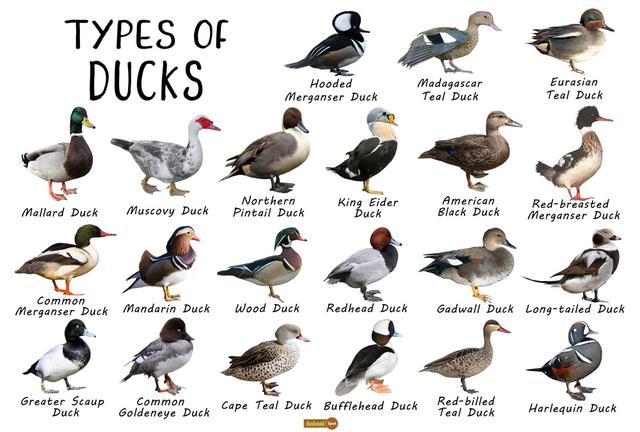
Duck meat comes in a variety of breeds, each with its own unique taste and texture. One popular breed is the white Pekin duck, which is known for its tender and succulent meat. The white Pekin duck has a milder flavor compared to other breeds, making it a great choice for those who prefer a more subtle taste.
Another breed worth mentioning is the mallard duck. Mallard ducks have a slightly gamier flavor compared to the white Pekin duck. This breed is often enjoyed by those who appreciate a more pronounced and robust taste in their duck dishes.
The Muscovy duck is yet another breed that offers a distinct flavor profile. Muscovy ducks have leaner meat with less fat content, resulting in a slightly firmer texture. Their meat has been described as having a rich and earthy flavor, making it an excellent choice for those who enjoy bolder flavors.
Lastly, we have the moulard duck, which is actually a hybrid between a male Muscovy duck and a female Pekin duck. Moulard ducks are commonly used for foie gras production due to their high fat content. The fat gives their meat an incredibly rich and buttery texture, along with a unique flavor that sets it apart from other breeds.
When choosing which breed of duck to use in your recipes, consider not only the taste but also how it will complement other ingredients and cooking methods you plan to use. Each breed brings its own characteristics to the table, allowing you to experiment and create dishes with different flavor profiles.
Factors Affecting Taste
Apart from the breed itself, there are other factors that can influence the taste of duck meat. As mentioned earlier, diet plays an important role in determining the flavor of the meat. Ducks that are raised on farms and fed a diet of corn and soybeans will have a milder, less gamey flavor compared to wild ducks that consume a wider variety of foods.
The cooking method you choose can also greatly impact the taste of your duck dishes. Roasting is a popular method that allows the fat to render out and baste the meat, resulting in juicy and flavorful duck with a crispy skin. On the other hand, braising tends to mellow out the gaminess of the meat and infuses it with flavors from the braising liquid.
It’s important to consider these factors when preparing duck dishes as they can help you achieve the desired flavor profile. Whether you prefer a mild and tender duck or a more robust and gamey taste, understanding the differences between breeds and utilizing appropriate cooking methods will allow you to fully explore the varied tastes of different duck breeds.
In conclusion, duck meat has a unique and distinct flavor that is often described as rich, tender, and slightly gamey. Its taste can vary depending on the cooking method and seasoning used. Overall, duck offers a delicious and flavorful dining experience for those willing to explore new culinary options.
Learn More About Grilling
If you want to learn more about grilling, check out these other helpful resources!

